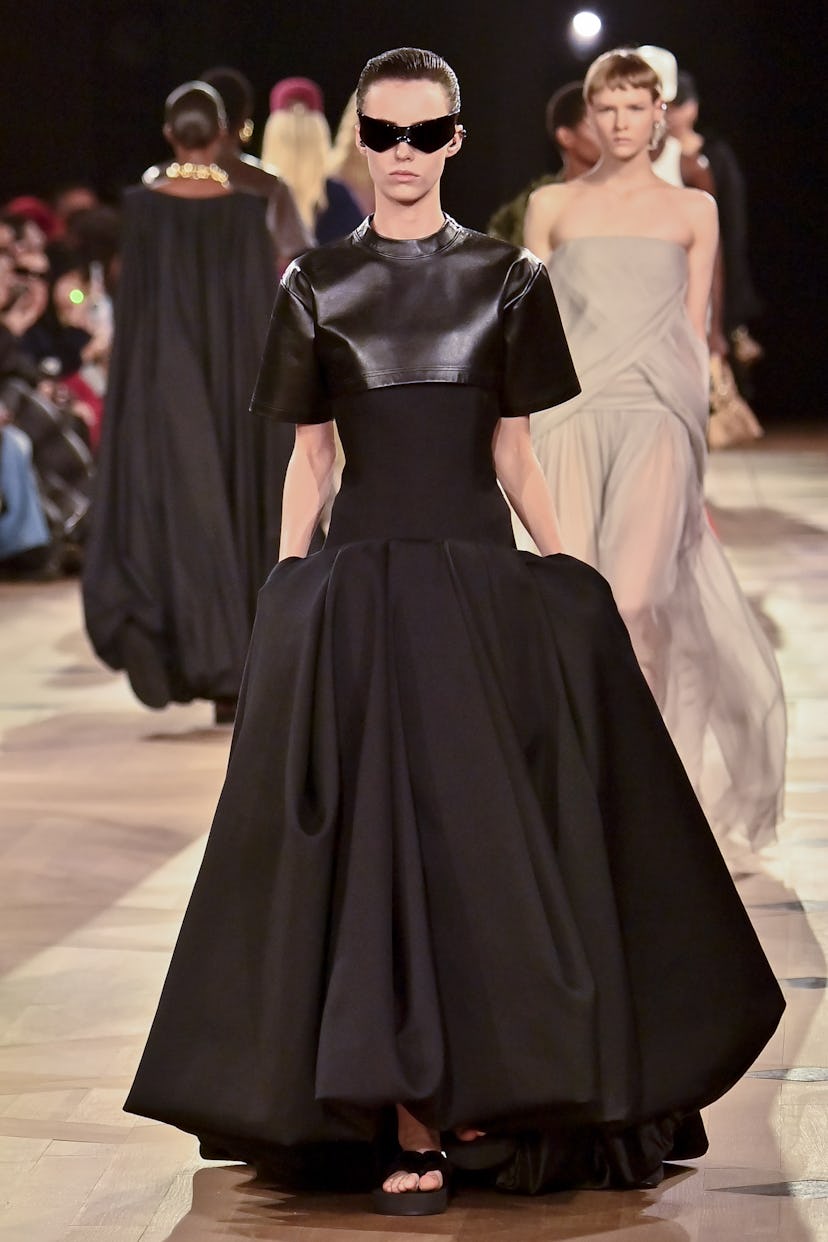Pierpaolo Piccioli Brings Meaning and Methodology to Balenciaga Spring 2026

Picture this: a black sculpted gown, white elbow-length opera gloves, monumental bug-eye sunglasses, and a heavy dose of chunky crystals, which totally obscure the forehead. That was the debut look for Balenciaga’s spring 2026 collection, otherwise known as Pierpaolo Piccioli’s debut for the brand. The subtle fusion of 1950s glamour with heavy contemporary aesthetics that permeated the clothes were so distinctly Balenciaga, and marked a moment of intrigue for Balenciaga, whose former creative director Demna decamped to Gucci this year.
The Paris Fashion Week crowd has been anticipating Piccioli’s Balenciaga era for weeks, making candid predictions in-between waiting for shows of other labels to start. For those unfamiliar, Piccioli is the former creative director of Valentino, and is known as one of the industry’s greatest purveyor of drama, with a flair for color and over-the-top dressing fit for red-carpet moments. His spring 2026 clothes read like a love letter to the brand, touching on endless Balenciaga house codes through the decades. “The meaning of Balenciaga is a methodology,” read the show notes. “The process of creation as ideology, as identity, an expression of humanity and human invention.”
From the first look to the last—a strapless, pale-pink gown with a mermaid ruffle and those same buggy glasses—the collection mixed the romance of Piccioli with the heritage of Cristóbal Balenciaga. Plus, there were small, loving tributes to former Balenciaga designers, from Demna to Nicolas Ghesquière. After all, Piccioli took his bow at spring 2026 (to a standing ovation, no less) wearing meme-worthy, chunky dad sneakers from the Demna era.
Balenciaga titled the collection “The Heartbeat.” One could easily see the ghosts of creative directors past in the bubble-like gowns (Cristóbal), oversize equestrian jackets and colorful knits (Nicolas) and the denim jorts and platform flip-flops (Demna). It was smart; the move could be read as Piccioli showcasing his skills and well-known aesthetic, without alienating the brand’s hardcore, brand-loyal customer base.
The show was a “Recollection rather than tribute, shadows of Balenciaga’s architectonic shapes are embedded in the actuality of today—bold and disruptive volumes applied to clothes that define our modern wardrobe,” according to show notes. “A vocabulary of contemporaneity, entirely transformed through approach.”
Piccioli showcased technical know-how via dresses with extreme feather-fringed bottoms, sculptural leather crop tops, and fur-like floor-length skirts that kept the eyes wandering all over the runway. Some looks truly were a textural feast for the eyes—the kinds of pieces you have to see up close to truly understand. Shield-like leather tops draped off the shoulders. Royal purple, chartreuse, emerald, and scarlet popped against the minimal space. Contrary to most of the Balenciaga shows of the past decade, there was not a single baggy t-shirt or hoodie in sight.